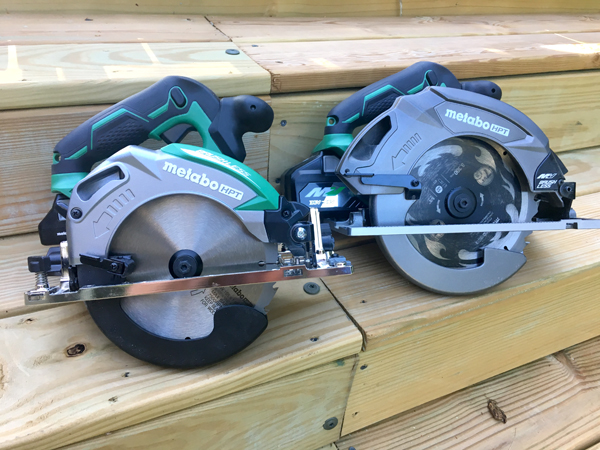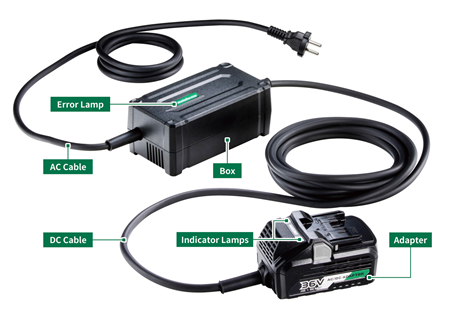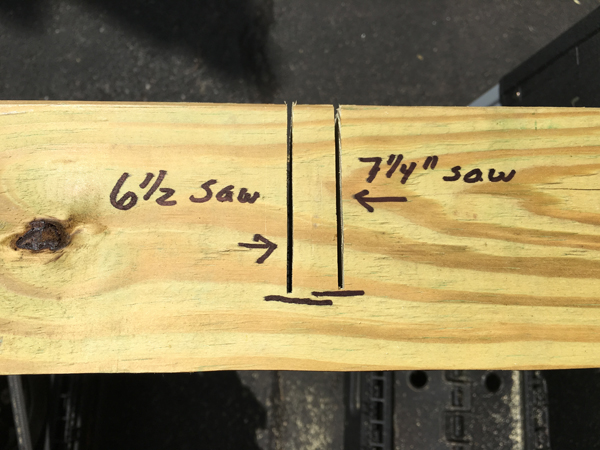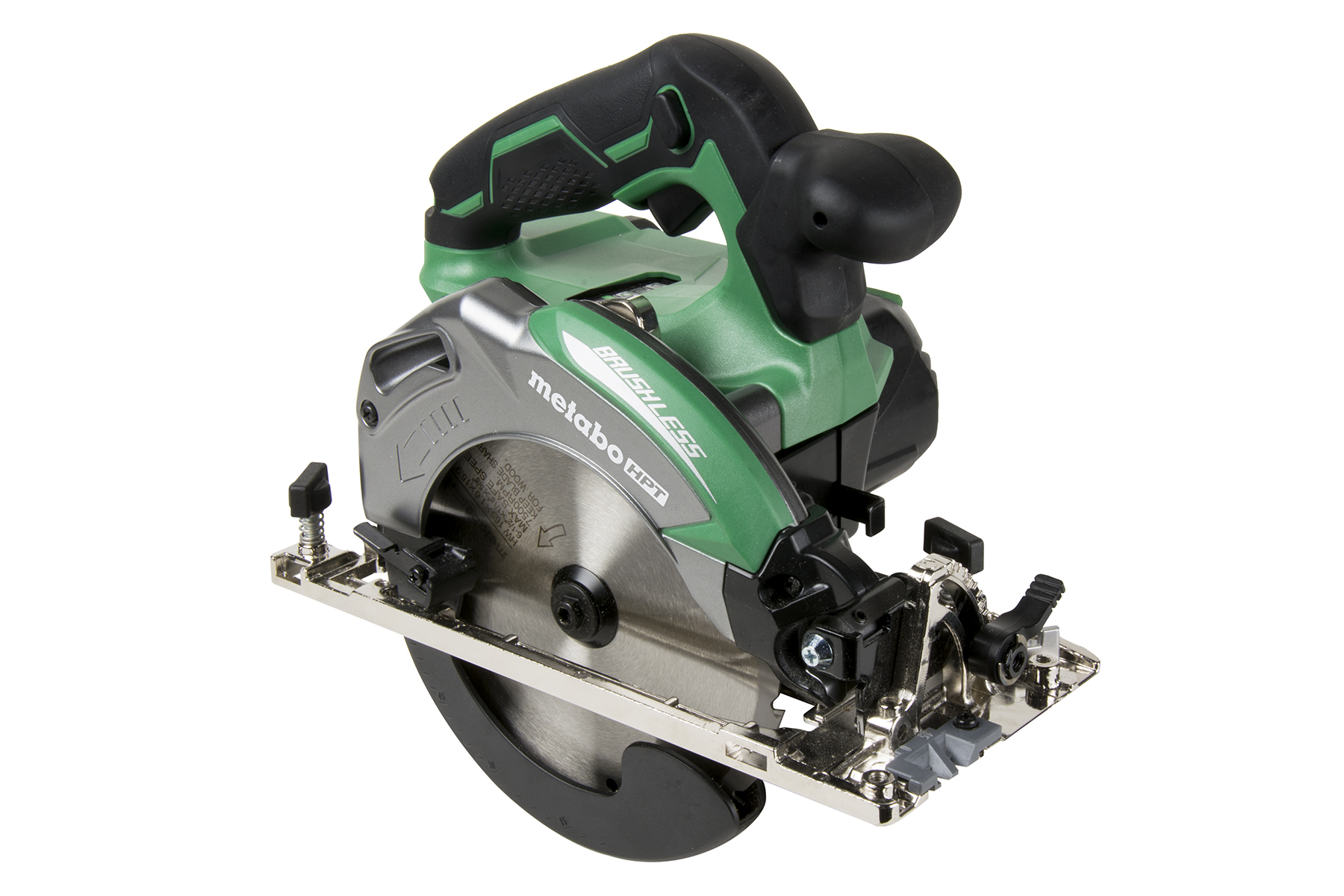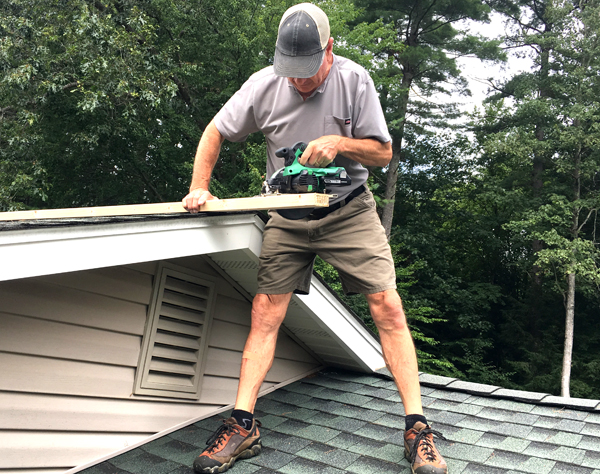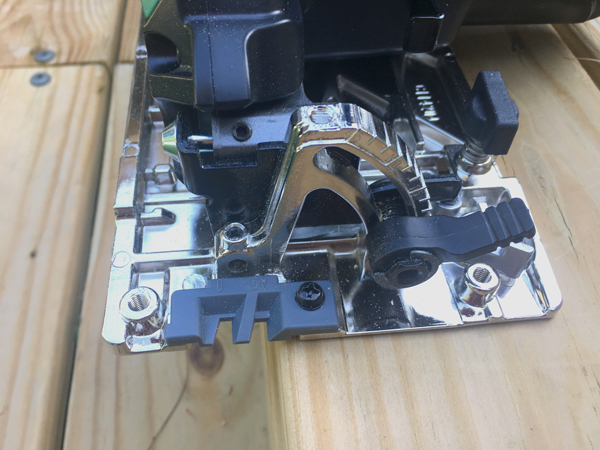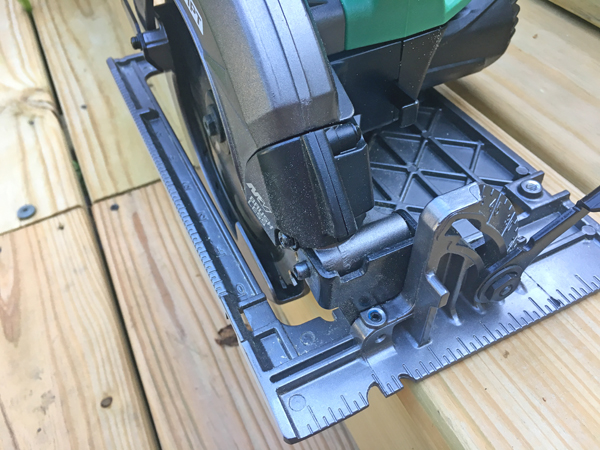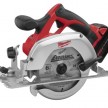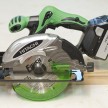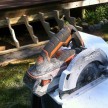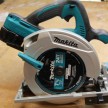Two Innovative Metabo-HPT Circular Saws
Metabo-HPT Circular Saws
By Ralph Mroz
The Metabo HPT18V Brushless 6-1/2″ Deep Cut Circular Saw (C18DBAL) and 36V Multi-Volt Brushless 7-1/4” Circular Saw (C3607DA) both represent significant advances in cordless saws, for different reasons. We look at both here. But for context let’s first straighten out the confusion around the Metabo HPT name and then provide an overview of their battery platforms.
Who is Metabo HPT? What Happened to Hitachi?
If you own or are interested in Hitachi power tools, you may have been trying to follow all the twists and turns of the brand. Well, suffice to say that high finance happened, companies were restructured, corporate assets were bought and sold, and money changed hands. But the way it all shook out is that what used to be Hitachi Power Tools will now be known as Metabo HPT in North America and Hikoki in Europe and Asia. The transition will be completed in 2020. All of the old Hitachi model numbers will stay the same.
 Don’t be confused by the name “Metabo” in the “Metabo HPT” name — it’s there as a remnant of one of the corporate shuffles that occurred. Going forward, Metabo HPT will be a completely separate company from Metabo — they won’t share batteries or have tools in common. In fact, they serve two different primary markets: Metabo the industrial metal fabrication market and Metabo HPT the construction market with an emphasis on carpentry.
Don’t be confused by the name “Metabo” in the “Metabo HPT” name — it’s there as a remnant of one of the corporate shuffles that occurred. Going forward, Metabo HPT will be a completely separate company from Metabo — they won’t share batteries or have tools in common. In fact, they serve two different primary markets: Metabo the industrial metal fabrication market and Metabo HPT the construction market with an emphasis on carpentry.
Now, Metabo, Hikoki, and Metabo HPT tools are all green and often look similar, but don’t confuse them. If you’re in North America and in construction, Metabo HPT is the brand you want, and “metabo-hpt.com” is the correct website.
Innovative Voltage Platforms
If you’re not familiar with the Metabo HPT (or the old Hitachi) battery platforms, let us clear that up for you since this can also be confusing and there’s real interesting stuff happening here.
Metabo HPT corded tools come in one of two voltage flavors: 18 volts or 36 volts. The 18-volt batteries work only with Metabo HPT (or older Hitachi) 18 volt tools. The 36-volt batteries are called “MultiVolt” batteries and the 36-volt tools they work with are called “MultiVolt” tools. The reason they’re called “MultiVolt” is that these batteries actually deliver 36-volts in MultiVolt tools and also 18-volts in older 18-volt tools (with twice the amp-hours that they deliver in 36-volt/MultiVolt tools). Said another way: Metabo HPT 18-volt batteries work only in Metabo HPT 18-volt tools but not in Metabo HPT 36-volt/MultiVolt tools. But the 36-volt/multi-volt batteries work in both 36-volt/MultiVolt tools, and in 18-volt tools with twice the run time.
Currently MultiVolt batteries are available in only four amp-hour models (which means they deliver eight amp-hours in 18-volt tools).
Metabo HPT MultiVolt AC Adapter
So far, so good. But there’s one other important factor, and that’s the MultiVolt AC adaptor. This consists of a converter that’s about the size of three cigarette packs, and a tool interface that looks just like a MultiVolt battery, which slides into a MultiVolt battery slot on the tool. The whole thing is 20-feet long (the cord from the AC plug to the converter is six-feet, while the cord from the converter to the tool is 14-feet). This AC adaptor works with all MultiVolt (36-volt) tools, but is not compatible with 18-volt tools.
Fortunately no battery or interface can mate with any tool that it’s not compatible with, so you don’t have to remember what’s compatible with what. While MultiVolt batteries can plug into 18-volt tools, the MultiVolt AC adaptor cannot. And 18-volt batteries cannot plug into 36-volt/MultiVolt tools. So there’s no chance you’ll ruin a tool by using the wrong power source.
Now on to the innovative saws.
Metabo HPT MultiVolt 7-1/4 inch Cordless Circular Saw
The MultiVoltAC adaptor on this saw is a big deal. With it you can run this saw in corded or cordless mode (which both provide the same power to the blade). This makes enormous sense for tools used at a station, either in a shop or at a job site. For much framing and even trim work you often set up a cut station near the stock pile, and run the cut-to-length members out to the installation locations. Even if you move a jobsite cutting station every few hours, you can still benefit from the convenience of not swapping out batteries or worrying about depleting them. And if you need to use the saw at another location for a few cuts, then you just pop in a battery and off you go. This is huge: you have the best of both worlds. All cordless tools should have this capability.
Metabo HPT 7 1/4″ Saw Specifications
As far as the saw itself goes, here’s the main specs:
- Brushless
- Electric brake stops blade rotation in about a second
- Soft start (I found less than a second to full RPM)
- Cut capacities: 1-7/8-in at 45 degrees and 2-7/16-in at 90 degrees
- Heavy duty aluminum base
- On-tool blade wrench storage
- Bevel scale stops at 0, 45 and 55 degrees
- Comfortable over-molded grip
- Built-in cut-line LED light
- Flat motor housing (making blade changes easier)
- 9.7 lbs with battery
- 4-Stage battery gauge
- Protection circuit in the battery, preventing over-load, over-charge and over-discharge
- MultiVolt battery charges in 52 minutes using the UC18YSL3M charger
Quiet mode
This saw features what Metabo-HPT calls a “silent” mode, which is really a reduced noise mode. It reduces the RPM from 4300 no-load to 2000 no-load, and if the load requires it the saw will automatically switch up to normal speed. I’ve seen comments that question the need for such a feature, but I’ve seen it. If you’re working in an occupied residence or office building the people living or trying to work there will appreciate any reduction in noise. If you don’t like this feature, just don’t turn it on.
Standard tests
Besides normal use, I tested the saw on four standard materials with the factory 24-tooth blade (a better blade would turn in even better performance). On 5/8-inch OSB it cut as fast as I could push the saw, which is way faster than is safe. Ditto with 2x KD stock. On rip cuts on both 4×4 PT and 4×4 oak, which entailed full-depth blade cutting, I could cut as fast as I could hold a line. On these typical materials the saw had all the power I could want.
The saw was comfortable to hold, use and operate, and bevel and cut-depth adjustments are easy to make. The squareness of the base plate to the saw can be adjusted if it ever goes out of perpendicular with an easy to access hex nut. Since it came factory perfect, I think I’ll just Locktite it. There were no operational factors that I didn’t like or that were weird.
Bottom Line
The bottom line is that this is a solid performer in the standard 7-1/4 inch circular saw category, with nothing that I could fault. It was easy to use, full-featured, and powerful enough for all my normal carpentry needs (I don’t timber-frame, but that probably calls for a 10-1/4 inch saw anyway). When you add in the AC potential provided by the line-voltage adaptor, the saw acquires a whole other dimension of capability. For that reason alone it should be in anyone’s list of considered saws.
Metabo HPT 6-1/2 inch Deep Cut Circular Saw
This 18-volt saw is referred to as “deep cut” because it’s configured so that the 6-1/2 inch blade cuts as deep or deeper than a traditional 7-1/4 inch blade. In this case 2-19/32-inchs (at 90 degrees), compared to the 2-7/16 (or 14/32) inch cut depth of the 7-1/4 inch saw above. Pretty amazing…and this feature allows this compact saw to be used in applications where traditional 6-1/2 inch saws won’t do the job. Which is also kinda a big deal.
Metabo-HPT 6-1/2″ Circular Saw Specifications
- Brushless
- Soft start & electric brake(about one second each to ramp up and stop)
- Fan cooled motor
- Overload and overheat protection
- -5 Degree to 45 degree bevel
- Soft overmold grip
- 8 lbs with battery
- 4100 no-load RPM
- Aluminum base
- Max 45-degree cut of 1-13/16-inch
- “Silent” (reduced noise) 2000 RPM mode option, as above
- LED cut-line light
- On-board hex wrench
Standard Tests for the Metabo-HPT Circular Saws
As before, in addition to normal use I tested the saw on four standard materials with the factory 24-tooth blade. On 5/8-inch OSB it also cut as fast as I could push the saw. With 2x KD stock and rip cuts on 4×4 PT, I could go as fast as I could hold a line. Only on 4×4 oak rips did I have to slow down to about 75% of the speed at which I could hold a line. That’s hardly a dig on the saw though, since it wasn’t designed for production cutting of heavy materials.
A Necessary Niche Saw
Where this saw shines is in its ability to be to easily carried to inconvenient areas where something needs cutting, and to do a proper job of it once there. Up on a roof, in a crawl space, in a closet (or any cramped space), under a cabinet, and so on. Because of the “silent” mode, this would also be the saw I’d want to use in an occupied building on small pieces (molding, trim, etc.) where I wanted to keep the noise as quiet as possible. Unless 6-1/2 inch saws are your usual go-to this is a niche saw, but one that will certainly find regular use. It fills that niche very well.
Not criticisms, but unusual with this saw:
- The bevel angle setting requires both a front lever flip and a rear screw losing/tightening, which actually makes the bevel set more secure than a single front lever.
- To set the -5 degree bevel requires a spring-loaded lever to be flipped. It might be possible to forget it and possibly think the saw’s at -5 when it’s at 0, or vice versa.
Improvements – but not with the saws
I really didn’t find anything not to like about either saw. There are a couple things though, not related to the saw itself, that I would ask Metabo-HPT to consider.
The dust collection attachment doesn’t come with either saw, and the rip guide doesn’t come with the 7-1/4 inch saw. It’s kind of a pain to have to track these down and order them separately. Also neither saw comes with a case. I realize that not many tools do these days, but most of us don’t like our tools rattling around all naked in a truck. This 7-1/4 inch saw in particular, with its AC adaptor, really could use a good purpose-fitted case. In fact one area in which any manufacturer could differentiate itself these days is in well thought out tool cases to accompany their tools. I do realize that they would increase costs, but I find myself buying or retrofitting cases for most of my tools anyway.
Finally, the manuals, while written well enough, could be improved by better graphic layout and better figures. This isn’t a big deal until you need to look up some odd thing that you need to do or adjust.



